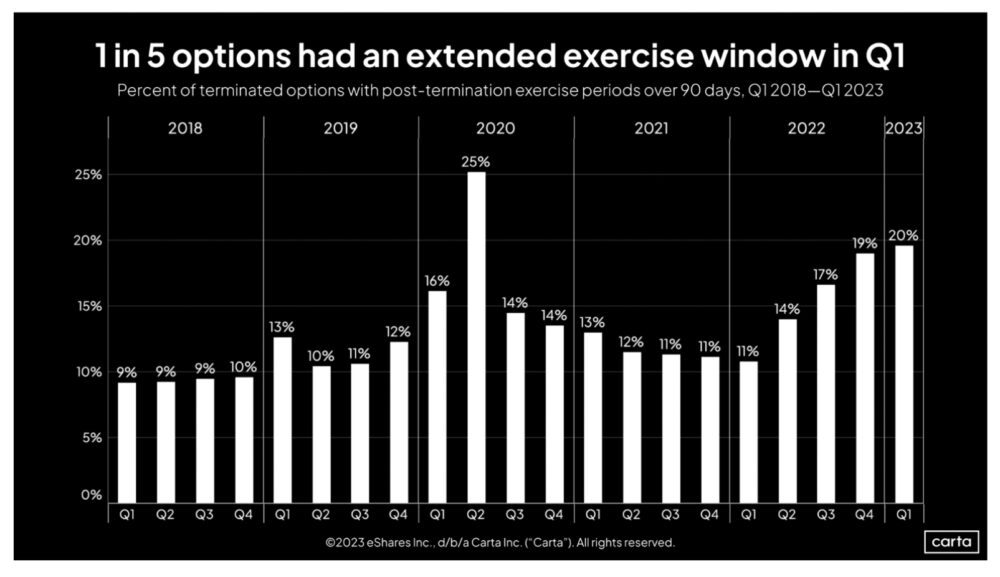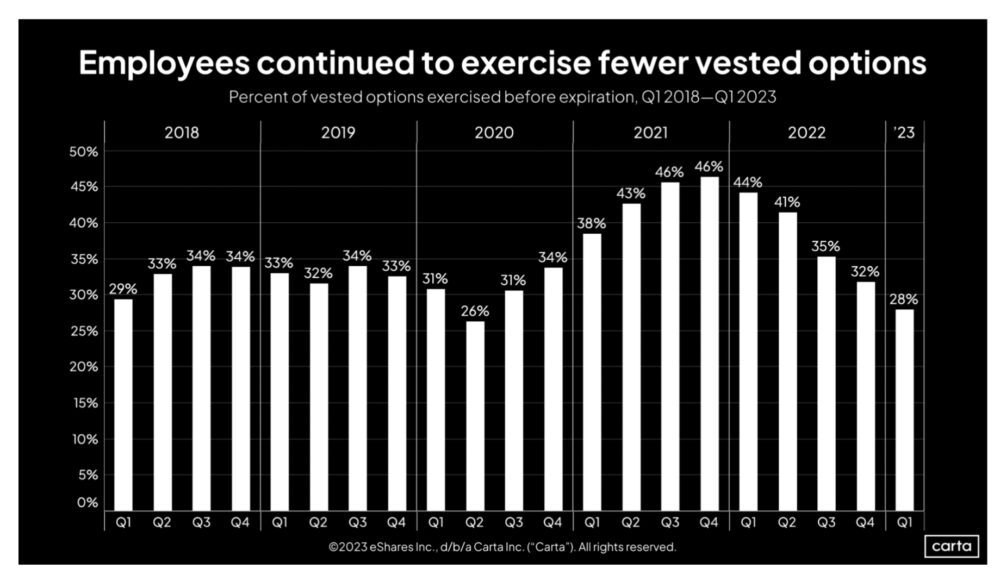So Carta recently put together some data on a topic I’ve wondered about: just how many startups allow option exercises beyond the traditional 90-day window?
The answer: the general trend is just over 10% of startups have extended windows beyond the traditional 90 days for departing employees to exercise stock options. But that is extended in tougher times, like just after lockdown in 2020 … and in 2023. In Q1’23, 20% of startups allowed longer exercise windows, twice the normal average, tied to in large part a local maximum in terms of layoffs.

Why doesn’t every startup do this? A few reasons — and note, I’m not a tax or comp expert. But the classic 90-day exercise period is from U.S. tax codes as the maximum allowed for tax-advantaged “Incentive” Stock Options. Exercising ISOs early, in some cases, doesn’t trigger immediate taxes on gains unlike “NSOs”. In some cases (check with your advisor).
From a startup’s perspective, there are two negatives for longer windows. First, the non-cash comp charges you’ll eventually have to take when you do real accounting go up. So they cost you more in terms of comp expenses, even if the cost is non-cash. And secondly, companies generally count on 50%+ of vested options and 66%+ of granted options to come back to the pool. I.e., to not be exercised and purchased. More than half.
And Carta’s other recent data shows that, confirming that recently, only 28% of optionees buy their shares, and even in the Go-Go Days of 2021, that still peaked at only 41%.
So a standard 90-day exercise period … does help you get back more options to grant to new hires.
Still, a longer window is very employee-centric. So how often do startups do it? About 10% of the time in Good Times, peaking at 20% in Tougher Times when layoffs are real and startups want to try to give good folks that lost their jobs more time to benefit from their hard work.


